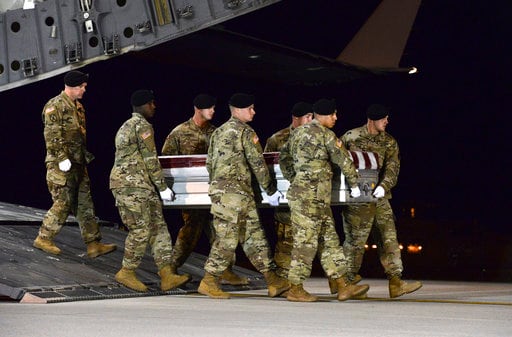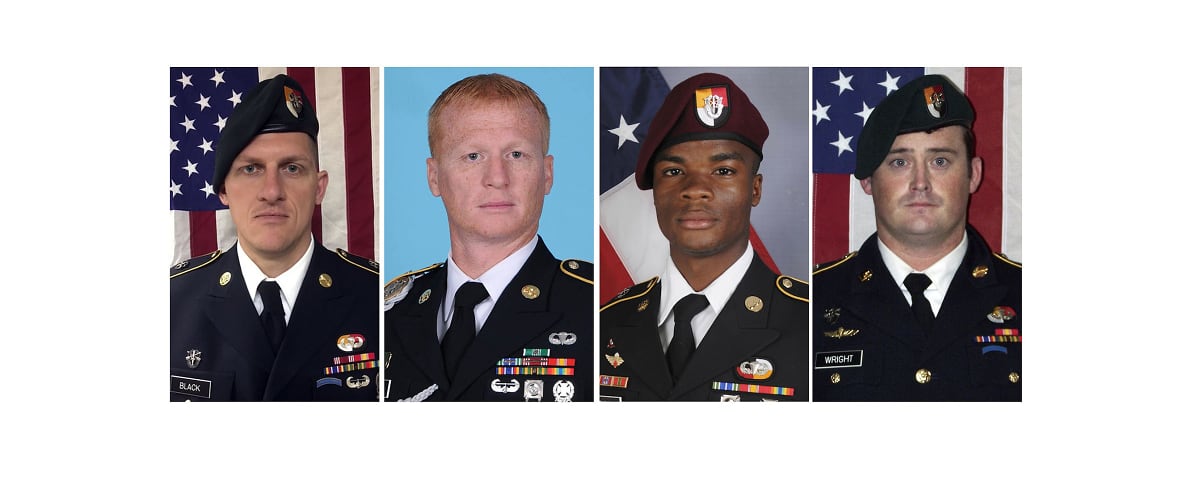The Pentagon released an extended video Thursday of its re-creation of the Niger attack last October that took the lives of four US service members, revealing new details about the soldiers’ final minutes.
The extended video included key details not provided in the Pentagon’s initial report on the attack, including that many of the surviving U.S. troops did not expect to live through the attack and “wrote short messages to loved ones on personal devices, believing they would soon be overrun,” the video said.
There were 46 personnel involved: eight U.S. Special Forces, two Special Forces support soldiers, one U.S. intelligence contractor, one Nigerien interpreter, a three-man Nigerien reconnaissance team and 31 supporting Nigerien soldiers.
The whole operation was spurred by drone surveillance received Oct. 2 that led officials to believe a high-ranking Islamic State-Grand Sahara militant was going to be in the vicinity of Tiloa, Niger.
RELATED

A mission plan was filed to conduct civil-military reconnaissance near Tiloa and conduct key leader engagements, but that was misleading.
“The mission was, in fact, to pinpoint the location of and capture, or, if necessary, kill, the ISIS-GS sub-commander.”
When the team did not find the sub-commander in Tiloa, they began to return to base. But new intelligence came in as they were returning; and the force was re-tasked to join up with another combined U.S.-Nigerien team, but weather turned that team back.
So the 46 U.S. and Nigeriens pressed on, discovering a campsite that was abandoned. Then they began to return to base, stopping at the village of Tongo Tongo to allow the Nigeriens to get breakfast, and the Americans conducted a key leader engagement that ran 30 minutes longer than expected.

The previous video described the service members’ firefight in detail, including the final moments of Sgt. La David Johnson’s life. What was left out was the rescue, and the confusion in the moments after, including that French rescue helicopters searched for 40 minutes for the surviving soldiers until one of the team members “moved into a clearing, waving an American flag to the helicopters to establish their identity as friendly forces.”
RELATED

At about the same time the survivors were located, the U.S. Special Operations Command-Africa commander “notified units throughout the Department of Defense that service members were missing, and activated contingency planning efforts.”
Another Nigerien team responding to the search efforts initially mistook the surviving forces as enemy fighters and fired on them for 48 seconds.
A Nigerien quick reaction force found the bodies of Staff Sgt. Bryan Black, Staff Sgt. Dustin Wright and Staff Sgt. Jeremiah Johnson about two hours after the rescue helicopters arrived.
Sgt. La David Johnson’s body was not found until 36 hours later. He was found clothed, on his back, with his hands by his sides. His boots and other equipment had been taken.
Tara Copp is a Pentagon correspondent for the Associated Press. She was previously Pentagon bureau chief for Sightline Media Group.




